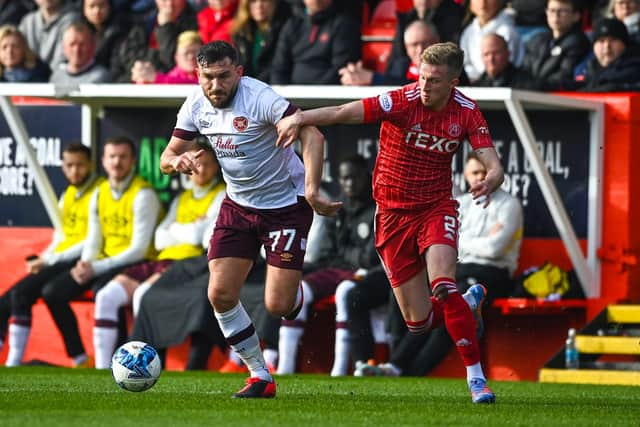Hearts analysis: Does Robbie Neilson have to make a formation change to save the season?
and live on Freeview channel 276
Yet this was a performance many supporters saw coming and why serious questions are currently being asked of the management team despite the club still holding a four-point lead in third place.
Results for Hearts were initially strong following the World Cup, going undefeated in 11 of their first 12 games. However, you’d be hard pressed to find many excellent performances in that run. Even the two 3-0 wins against Hibs and the 5-0 hammering of Aberdeen were more an example of clinical finishing and solid defending rather than dominating play across the park.
Advertisement
Hide AdAdvertisement
Hide AdOpponents began to figure out the influence of Robert Snodgrass as the deep-lying playmaker. The former Scottish international was a huge reason for the upturn in results from late October onwards after the struggles brought about by juggling Europe and domestic football. But teams starting sticking two men on him and his ageing legs have often prevented him from escaping such relentless pressing.


This, along with the emergence of Josh Ginnelly as an excellent foil for Lawrence Shankland, persuaded head coach Robbie Neilson into altering his tactics slightly, tweaking the 3-4-3 into a 3-5-2. Ginnelly was the hot hand, Shankland is arguably the club’s best player and Snodgrass needed help in the centre, so the change made sense. But it also meant there was no longer a natural home for Barrie McKay, who has played the vast majority of his career as an inverted left-winger.
McKay doesn’t fit the position for two reasons. Firstly, he’s too cavalier with his use of the ball. This is a strength further forward where he shows no fear in trying something which could lead to a goal, but 15 yards deeper it has the tendency to put his team in trouble. Secondly, he’s not the most industrious of players in an area that’s called “the engine room” for good reason.
It led to what we witnessed at Pittodrie. McKay and Snodgrass were run all over by a Dons midfield featuring Graeme Shinnie with support from Ross McCrorie and Jonny Hayes at wing-back. Those three are incredibly strong runners and Hearts, with the team also featuring 34-year-old Michael Smith, never stood a chance.
Advertisement
Hide AdAdvertisement
Hide AdAmple evidence to say McKay and Snodgrass can’t play in the same midfield three may not be enough by itself to demand a change in the formation. You could simply remove one or both from the starting XI. But the three-at-the-back was first implemented and sold as the ideal system because it constructed a flawless back three of John Souttar, Craig Halkett and Stephen Kingsley. Each of the centre-backs on the outside were adept at driving forward to support the midfield. You’re not getting the same type of production in that area from Toby Sibbick or James Hill compared to Souttar, while Kingsley’s form has regressed this season. Simply, it’s no longer a strength of the system.
Neilson changed his team into a 4-4-2 last season after the arrival of Ellis Simms and moved things into a 4-3-3 earlier this campaign when injuries hit. The Hearts boss is capable of flexibility but does tend to stick with a system until all indications are that it’s no longer optimal. The time for change is now.
Message from the editor
Thank you for reading this article. If you haven't already, please consider supporting our sports coverage with a digital sports subscription.
Comment Guidelines
National World encourages reader discussion on our stories. User feedback, insights and back-and-forth exchanges add a rich layer of context to reporting. Please review our Community Guidelines before commenting.